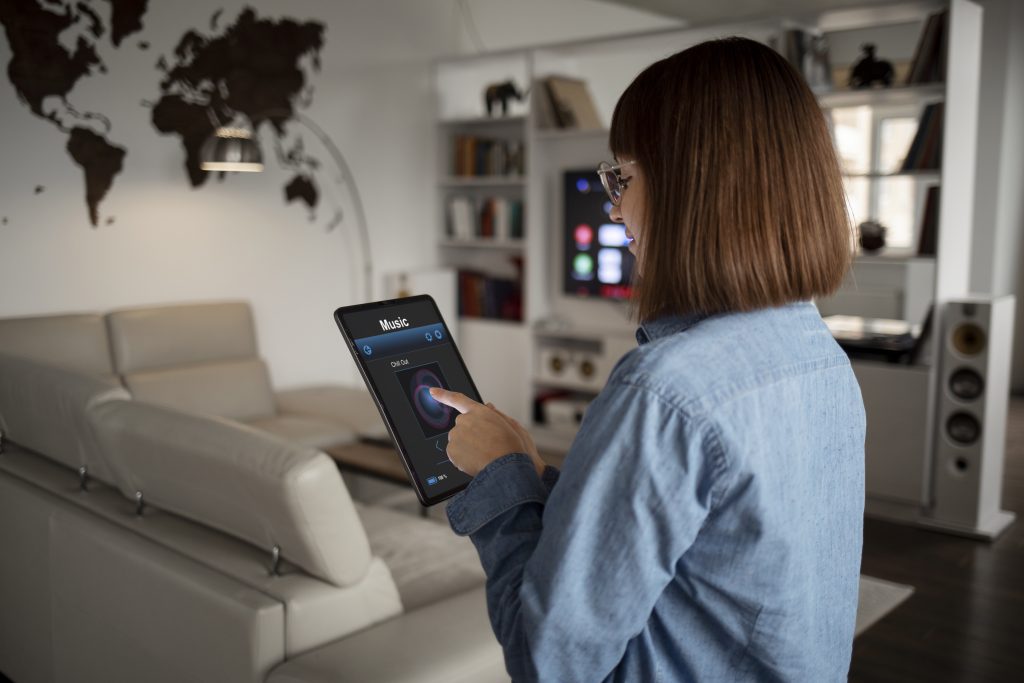The Benefits of Using Smart Technology to Monitor Your Home
Aiden Foster August 13, 2025
In recent years, smart technology has revolutionized how we live, providing convenience, security, and energy efficiency like never before. One of the most prominent trends within this space is the integration of smart devices into home monitoring systems. These technologies are no longer a luxury reserved for the tech-savvy but have become an essential part of modern living, offering peace of mind and enhanced control. In this article, we will explore the benefits of using smart technology to monitor your home and how it can improve security, reduce energy costs, and simplify your daily routine.

1. Enhanced Home Security
Home security is one of the primary reasons homeowners turn to smart technology. Traditional security systems often required manual operation, monitoring by security services, and expensive installation costs.
Smart cameras, doorbells, motion sensors, and alarms can be remotely controlled via smartphones, sending real-time alerts for suspicious activity. Smart doorbells with video features allow homeowners to see who is at the door, even when they’re not at home. Additionally, motion detectors integrated into smart systems can send notifications if unusual movement is detected around the house. Even when away, your home is constantly monitored, reducing the risk of burglary or other security threats.
Homes with security systems are 300% less likely to be burglarized, and smart tech adds extra protection and control.
2. Energy Efficiency and Cost Savings
A major benefit of smart technology is better monitoring and control of energy usage for improved efficiency. Smart thermostats, lighting, and appliances can optimize energy consumption, leading to significant cost savings over time.
Smart thermostats, like Nest and Ecobee, adjust home temperature remotely, learning your preferences to optimize heating and cooling. According to the U.S. Department of Energy, a smart thermostat can save homeowners between 10% and 15% on heating and cooling costs annually.
Smart lighting systems allow remote control, timers, and motion sensors to reduce energy waste by turning off lights when unoccupied.
Smart appliances like refrigerators, washing machines, and dryers can be programmed to run during lower off-peak energy rates. This can further help reduce electricity bills while ensuring your home is running efficiently.
3. Simplified Home Management
Smart technology provides unparalleled convenience by allowing homeowners to manage their homes from the palm of their hand. Voice assistants like Alexa, Google Assistant, and Siri control devices such as lights, thermostats, locks, and appliances. This hands-free control streamlines day-to-day activities, allowing users to focus on other tasks while managing their home environment.
For instance, smart speakers can be used to adjust the thermostat or turn off the lights without needing to get up or use a physical remote. With a simple voice command, you can check the status of your home, set reminders, or control multiple devices at once. Moreover, smart devices can be integrated into routines, automating tasks based on your preferences. For example, you can set your home to “wake up mode,” which could include adjusting the thermostat, turning on the lights, and opening the blinds all at once.
Smart home systems can also integrate with third-party services. For example, smart refrigerators can keep track of food inventory and notify you when supplies are running low. Similarly, smart vacuum cleaners like the Roomba can be scheduled to clean your floors automatically, eliminating the need for manual effort.
The convenience of managing multiple devices from a single interface simplifies home management, making it easier for busy families or individuals to stay on top of their daily routines.
4. Remote Monitoring and Control
Another key benefit of smart technology is the ability to monitor and control your home from anywhere. With the help of a smartphone app, homeowners can check the status of their security systems, control temperature settings, or even unlock doors while they are miles away.
For example, if you receive an alert that a door has been left unlocked, you can remotely lock it with the touch of a button, ensuring your home stays secure. Similarly, if you’re running late and need the house to be warmer or cooler by the time you arrive, you can make adjustments from your phone to ensure a comfortable environment when you walk through the door.
The ability to monitor your home remotely is also an invaluable feature for those who frequently travel. You can keep an eye on your home’s security, adjust lighting to make it appear as though someone is home, and even manage appliances to ensure nothing is left on unnecessarily.
5. Health and Wellness Integration
With smart technology becoming more interconnected, many devices now have the ability to integrate health and wellness features. For instance, smart air purifiers monitor and adjust the air quality in your home based on real-time data. These devices can automatically increase air filtration when pollution levels rise or when allergens are detected. Some models even send alerts to your phone to inform you when it’s time to replace filters.
Additionally, smart lighting systems are equipped with features like blue light filtering and adjustable brightness, which can help improve sleep quality. By using smart lights that adjust to natural circadian rhythms, you can enhance your well-being by creating a relaxing atmosphere conducive to rest.
Smart technology can also be used to monitor environmental factors such as humidity and temperature, which can be important for people with respiratory conditions. Devices like smart humidifiers can automatically adjust moisture levels in the air, helping to prevent dryness, particularly in colder months.
Conclusion
Smart technology offers a variety of benefits when it comes to monitoring and managing your home. From enhanced security and energy efficiency to simplifying daily tasks and improving health and wellness, the integration of smart devices provides homeowners with a greater sense of control and convenience. As the technology continues to evolve, it is expected that more people will adopt smart home systems, making them an integral part of modern living. Whether you’re looking to improve security, reduce energy costs, or enjoy the convenience of hands-free control, smart home devices are quickly becoming an essential tool for homeowners around the world.
References:
- U.S. Department of Energy (2020). Smart Thermostats: A Guide to Energy Savings. Available at: https://www.energy.gov (Accessed: 13 August 2025).
- National Institute of Justice (2019). Impact of Security Systems on Burglary. Available at: https://nij.ojp.gov (Accessed: 13 August 2025).
- Consumer Reports (2021). The Best Smart Home Devices for 2021. Available at: https://www.consumerreports.org (Accessed: 13 August 2025).







